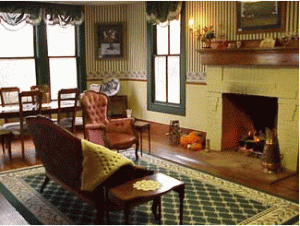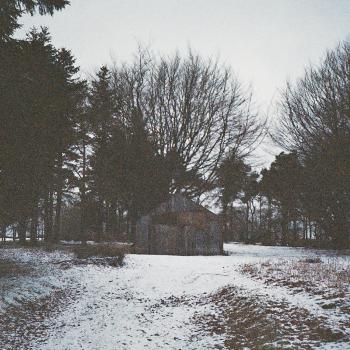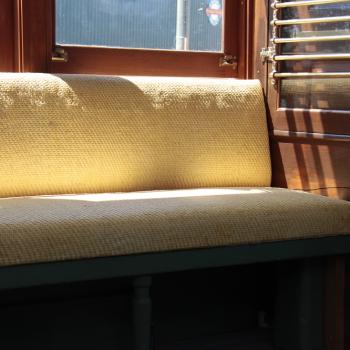 I was raised in a house full of old furniture: old desks, old mirrors, old rugs. There are old paintings on the walls and old linens in the drawers. The silver is old, the lamps are old, and at this point, even most of the photographs are old. After all, who prints such things out these days?
I was raised in a house full of old furniture: old desks, old mirrors, old rugs. There are old paintings on the walls and old linens in the drawers. The silver is old, the lamps are old, and at this point, even most of the photographs are old. After all, who prints such things out these days?
Most of the time the images we take stay locked within the device upon which they’re captured. And there they remain, always new, even as the reality that they memorialize grows further and further into eclipse.
Most of the trappings I speak of are legacies from people much older than I, and in turn those people most likely received them from those who were much older than they. It seems that whenever one of my forbears died, the contents of his house were incorporated into a house belonging to the living, folded in and blended through, the everyday effects and commonplace uses of one set of lives engulfed and assimilated—salt and sugar caught up by water, flour, and milk—ever richer, ever thicker, never done.
On and on it went, the generations past living cheek by jowl with the generations present. Open a drawer and you could easily find a wallet from 1957 sitting alongside fingernail clippers, fresh from Walgreens—earrings from a woman dead a hundred years tangled up with an extra set of the new Ford truck keys—or a parasol handle resting next to a packet of Doublemint gum. Portieres as well as pen knives, oyster plates as much as cuff links, the coin of the nineteenth century was kept deep within the purse of the twentieth.
But legacies were not the only old things that met in that confluence—that delta—rich with loam and teeming with stories. Other, foreign antiquities were added with regularity.
“Character,” it was always said, “cannot come with a chemical smell.” Rather, it has the patina of old primary woods—cherry and maple and walnut—and old base metals—copper and brass and pewter.
To further this philosophy, estate sales were scoured for in newspapers, and antique stores were hunted down on roadsides—a cheval glass, a pie safe, a quilt in the pattern of a double wedding ring—these acquisitions would come under the roof, taking their place among the bloodline heritage. As such, the mélange grew even more varied, storied, and grained.
Faulkner might have said that “the past is not even past,” but hell, in that house, the past was damn certain to be the future—and now that I think back upon it, a very pleasant one. Things that have been settled into, the new broken off and the starch worn out, are just more pleasing to the human touch.
Newer things could be found there too, and they were mostly functional—appliances and fixtures, lighting and technologies, the odd recliner and the chance stereo cabinet—but on the whole the balance was long in the tooth.
I see now that there was a virtue to this, at least in the moral hierarchy of the modern day. For a predilection is set against a “disposable culture,” as ours is always scolded for being. Things were not thrown out casually; what had a pedigree stayed.
There was even some “repurposing” of old objects, though never in a way that called for a structural change. That is, a cabinet or trunk might be used in a way at odds with its original function, but nobody would dream of conducting surgery on the piece in order to make it fit a new role.
Roundly mourned were armoires gutted for televisions, farm tables cut down to coffee table height, and holes bored through perfectly good vases to electrify the vessel into a lamp. No, whatever something started out as was what it remained. You would not make it over into what it might, but should not, be.
With this background, it might come as no surprise that the Crate and Barrel/West Elm/Pottery Barn attitude towards furnishing—with its ethos of horizontality—with its smooth surfaces, shiny chrome, woven carpets, and leather ottomans that transform into bar stands—holds no great charm.
In fact, the clean lines much prized now—the sleek, uncluttered surfaces—leave me wondering where all the stuff is. A piece here and there couldn’t hurt, but I can’t cotton to a whole house full of stuff that seems to have a superior attitude to the people who would sit on it.
It’s a matter of what you’re accustomed to, I suppose; my bias just lies in another direction. Perhaps, through such long acclimation, what others would find stultifying—I’m often told these things are burdensome—I find largely natural. Br’er Rabbit in the Briar Patch.
But at root, I think this proclivity can be summed up by what a Trappist monk said once while I was on retreat.
In the graveyard, the brothers tended stones so ancient that the names had long been worn away. Some of the slabs were as blank as slates; no one could tell who lay beneath them. When asked why, the monk said that these men—many never known by the living—were still among us, and that their names must be kept and accounted for, even if they could not be read.
It’s a mystery that the inanimate objects we carry through the world outlast us by so long, but it’s also a mystery that they retain a caché of sanctity because of those they belonged to.
And if it’s instinctive, atavistic, to seek to touch first class relics—because we suspect life still lingers in those old bones –it’s reasonable to surround ourselves with the second class relics upon which those old bones retired. Crowded, I suppose, but familiar.
I think I’m going to need a bigger house.











